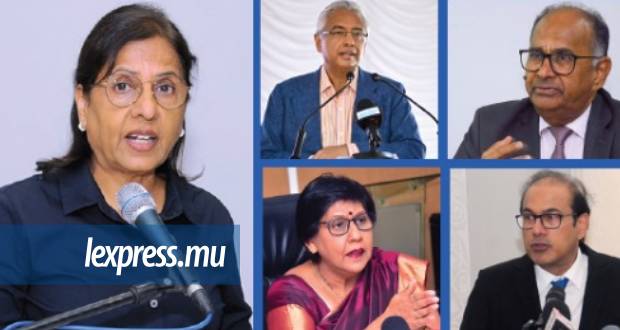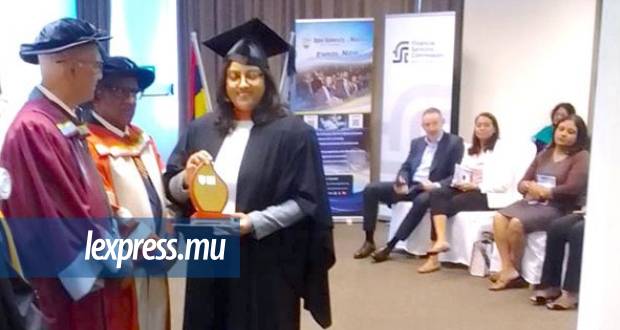Publicité
Who is right between Jugnauth and Bérenger on electoral reform?
Par
Partager cet article
Who is right between Jugnauth and Bérenger on electoral reform?

1. When same is different and different is same
Pravind Jugnauth claims that the proposals of the MSM-ML government on electoral reform are similar to those of the LP-MMM in 2014. Hence his surprise that the MMM is rejecting them. Paul Bérenger argues that the proposals are very different and it explains why the MMM has spurned them. Obviously, the two cannot be right even if one should allow for different shades of grey when issues cannot be categorised as black or white.
Is it a case of either genuinely confusing same for being different and different for being same? Those familiar with scientific logic know this puzzlement. Or is it simply a case of political rhetoric combined with negotiating brinkmanship? Or has one of the two leaders been misled? I have unravelled the two sets of proposals to understand whether it is a riddle wrapped in a mystery inside an enigma or it is a clear case of one of the political actors being patently wrong on the basis of objective facts, figures and empirical evidence.
The table below compares the two sets of proposals. They are quire revealing in terms of their similarities, their differences and more importantly what separate them significantly and substantially. The comparison is comprehensive as I have considered 21 features of the two proposed electoral reforms.
2. Where they are similar
There are seven features that the two sets of proposals share. The number of FPTP seats in the 21 constituencies is 63 in both cases while the eligible threshold for PR seats is at 10% of the national vote. Both provide for the PR list to be pre-determined, closed and rank-based and allow the leaders to choose 6 Mps (up to 10 in the case of the MSM-ML proposal) after the elections. The two are similar in terms of gender fairness at the constituency level and there is no necessity to declare one’s community to stand as candidate. And FPTP Mps do not lose their seats in case of defection.
3. Where they are different
There are nine areas where the two sets of proposals differ. The number of PR seats is dissimilar together with the formula to subsume the Best Loser seats. The total number of seats, the type of mixed electoral system and the number of party lists are also different. The choice of PR Mps and the gender fairness for the PR seats are not the same. The number of votes cast by each elector and the replacement of PR members in case of defection also vary.
4. Where they are significantly and substantially different
This is probably the most important factor and it accounts for the outright rejection of the MSMML proposals by all political actors and other stakeholders. The two sets of proposals differ significantly and substantially in five key areas. First, the MSM-ML proposal uses the parallel mode to allocate the 12 PR seats. It gives an undue advantage to the party that has already benefitted disproportionately from the anomalies of the FPTP formula. It makes matters worse in terms of fairness and equity.
The LP-MMM recommendation uses the “every vote counts” system to allot the 20 PR seats. It lowers the huge disparity between the vote of the unsuccessful party and its political representation in the National Assembly. Second the MSM-ML proposal distributes the Best Loser seats so as to restore the mathematical difference in terms of seats as it exists after the FPTP outcome. The LP-MMM recommends its distribution on the basis of the same “every vote counts” formula.
Third, the MSM-ML proposal does not allow for double candidacies. It therefore does not give a second chance to some candidates who are unsuccessful in constituency contests as it exists in the current Best Loser System. There is thus no way for candidates such as Henry, Wong, Quirin, Sorefan, Lepoigneur, Abbas Mamode and Barbier to be “retrieved” by the system as was the case in 2014. They would be simply eliminated. Equally for Sinatambou, Chaumière, Sayed Hossen and Soodhun in 2005, Perraud in 2010, Gaëtan Duval in 1982, 1991 and 1995, Bérenger in 1983, Xavier Duval in 1991 and 2000, Razack Mohamed in 1967 and Yousuf Mohamed in 1976. Double candidacies could also give a glimmer of hope to candidates such as Murday, Chetty, Maistry and Nagalingum who all lost out to split votes in 2014.
The LP-MMM proposal provides for double candidacies and thus increases the chances of these candidates to have a second chance similar to the existing Best Loser System. Fourth, the MSM-ML proposal does not cure the main defect of the current FPTP electoral system, which is the inordinate disparity between votes and seats. It leaves the mathematical difference in seats following the FPTP election unchanged after the allocation of the 18 additional seats. It therefore vitiates the very objective of any reform. The LP-MMM proposal lowers the disparity between votes and seats while providing for the FPTP winner to have a reasonable majority to govern the country.
Fifth, the MSM-ML proposal is very weak on ensuring the participation, representation, inclusion and diversity of our rainbow nation in the political process. The LP-MMM recommendation with double candidacies has a much better chance of assuring such inclusion and diversity. As it exists in many countries with a mixed FPTP-PR electoral system.
5. Two examples to show the difference
Two examples will illustrate the difference between the two sets of proposals in terms of stability and parliamentary representation.
(i) In 1991, the MSM-ML proposal would allocate 9 additional seats to the LP-PMSD alliance. The mathematical difference of an excessive majority of 52 seats re- mains after the allocation of the 18 seats. The LP-PMSD would end up with only 12 seats (15% of the total seats) on 40% of the national vote. The LP-MMM proposal would deliver 22 seats to the LPPMSD alliance, representing 27% of the 82 seats on 40% of vote. It reduces the huge disparity between vote and seats (from 52 to 34) while securing a comfortable majority of 34 seats to the FPTP winner. It is much fairer while providing for stability.
(ii) In 2014, the MSM-ML proposal would allot 9 additional seats to the LP-MMM alliance. The huge mathematical difference of 32 seats remains and the LPMMM would end up with 22 seats (27% of seats) on 38.5% of national vote. The LP-MMM proposal would produce a different outcome with the unsuccessful alliance taking 29 seats, representing 35% of seats while leaving an important majority of 20 seats for the FPTP winner to govern.
Again it is fairer while providing for stability.
6. Who is right between the two
While there are few and probably not significantly important areas where there are similarities between the proposals of the MSM-ML government in 2018 and the recommendations of the LP-MMM in 2014, it is plain that there are major divergences between the two sets of proposed reform. Crucially, they differ in two key areas that are essential for a successful reform. The LP-MMM proposal lowers the inordinate disparity between votes and seats while securing a reasonable majority for the FPTP winner while the MSM-ML recommendation does not do so.
Equally, the LP-MMM proposal affords a high probability of a good replacement for the Best Loser System in terms of inclusion and diversity of our rainbow nation in the political process while the MSM-ML formula would seriously jeopardise the representation and participation of some key components of our plural society. There is no prize for guessing who is right between Jugnauth and Bérenger. It is Paul Bérenger. And by a very wide margin. Based on facts, figures and empirical evidence. As stated by Paul Bérenger, there are indeed major and substantial differences between the two sets of proposals. It also explains why the LP and the MMM are vehemently against the recommendations of the MSM-ML government. Could the PM have been misled by his advisers on such a crucial issue?
7. Could the confusion save the reform agenda?
If the Prime Minister has made a genuine mistake to believe that the two proposals are similar when they are actually different, there is probably a case for government to remove its two red lines so as to reach a consensus with other political parties.
The two sticking points are as follows:
(i) There is absolutely no need to insist on keeping the mathematical difference in seats as it exists after the FPTP outcome. A reasonable majority as shown above is enough to secure a stable government. A difference of 34 seats in 1991 and 20 seats in 2014 constitutes a huge majority. We could either adopt the “every vote counts” mode or an alternative formula with a guarantee for the absolute FPTP winner;
(ii) There is need to provide for double candidacies to give a second chance to some candidates who benefit from the current best loser system. Otherwise, the representation and diversity of our National Assembly will be affected. It will not be broadly inclusive of the different colours of our rainbow nation.
As a matter of fact, should we accept double candidacies and allow for few candidates to be ranked at the same place as is the case in some countries, we can get rid of an objectionable feature of the MSM-ML and the LP-MMM proposals. There would be no need for leaders to appoint Mps AFTER the elections. Such post-election peremptory power does not exist in any democratic country.
The composition of the list would be sufficient to deliver a broad based Parliament. Germany and Japan do it well. South Africa produces a representative parliament with Blacks, Whites, Indians and Coloured without this arbitrary leaders’ choice. Belgium gets it right between Flemish and Wallons while Northern Ireland does it between Protestants and Catholics.
Publicité
Les plus récents






